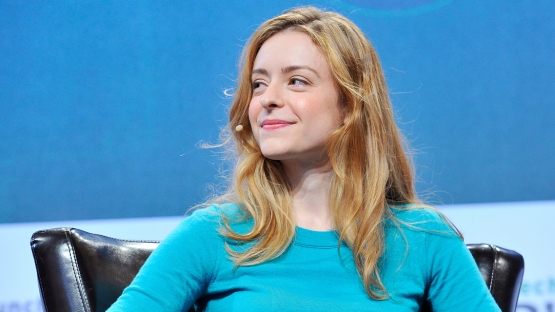Next week's Scientific Forum will discuss how nuclear technology can help us achieve the Sustainable Development Goals by 2030. We interviewed one of our youngest speakers, nuclear engineer and CEO of Transatomic Power Leslie Dewan, about her views on the future of nuclear energy. Dewan is a nuclear engineer, and Co-founder and CEO of Transatomic Power. She was named a TIME Magazine "30 People under 30 Changing the World," a Forbes "30 under 30," and a World Economic Forum Young Global Leader.
What inspired you to become a nuclear engineer?
I became a nuclear engineer primarily because I had two wonderful physics teachers in high school. Both went to MIT, both are women. They showed me how cool science is, how cool physics is and got me extremely excited about all the neat things you can potentially build with that scientific toolkit. At the same time, I've always been an environmentalist and wanted to find better ways to produce more carbon-free electricity – nuclear engineering was a great and logical choice for me.
What will be the role of nuclear power in achieving the sustainable development goals by 2030, especially Goal #7 - affordable and clean energy, and Goal #13 - climate action?
The world needs nuclear power - alongside solar, wind, hydroelectric and geothermal power - if we want to ensure global access to affordable clean energy by 2030, while at the same time reducing greenhouse gas emissions. Currently, approximately 1.1 billion people worldwide lack access to electricity. In many rapidly developing countries the rising demand for electricity is being met by fossil fuels, which leads to devastating consequences for the environment. We can use new nuclear power plants to meet this demand rapidly, generating carbon-free baseload electricity while preventing the construction of hundreds of new fossil fuel plants.
Nuclear power plants are typically very large, with outputs ranging from hundreds of megawatts to a gigawatt. As the world moves to a more distributed electric grid in the future, I believe that nuclear power plants will be most useful at centralized locations such as factories and data centers that draw large amounts of electricity at a single location. Solar and wind power, coupled with better storage devices, would be more useful in lower-density areas, such as residential neighborhoods. New small modular reactors, which will be able produce power on the order of tens of megawatts, would also be well-suited for a more distributed electric grid.
What are your top three arguments for nuclear power as part of the energy mix for the future?
First, I always like to emphasize that nuclear power is a vital part of present-day carbon-free electricity production. Currently one third of the world's carbon-free electricity production comes from nuclear.
Secondly, nuclear is very good at providing a stable source of baseload electric capacity - consistently producing power that's unaffected by changing weather or changes in fuel cost.
Finally, we need to use all of the carbon-free sources we have, including nuclear, to ensure better global access to electricity while moving the world away from fossil fuels.
How can innovation help address some of the current challenges and issues of using nuclear power, such as safety?
Worldwide, approximately 100 universities, national laboratories and private companies are working to develop new types of nuclear reactors that find solutions to the issues of safety, waste production and cost. Interestingly, many of these designs were initially examined in the very early days of the nuclear industry, in the 1950s and 1960s. Some showed tremendous safety benefits: for example the molten salt reactor, initially developed at the Oak Ridge National Laboratory in the United States, could not melt down, even in a worst-case scenario accident. Even if the plant lost all external electric power, which is what happened at Fukushima Daiichi, and even if the operators were no longer on site, the reactor would cool itself down and gradually coast to a safe stop. Work on the design stalled for many decades, however, because of the high costs involved.
It's only recently that there's been a dramatic resurgence in research into this type of design, as well as several others.
It is difficult to inspire young people to go into science, especially young women and girls. What would you tell them?
For me, it was extremely important to find mentors in the field, especially other women, to give me advice and help guide my work. I could look to them and think: yes, of course I can be a physicist or nuclear engineer, because right there in front of me is another female physicist and nuclear engineer, showing me that it can be done.
What is the most exciting thing you are working on at the moment?
I'm lucky to have an extremely cool job. My company is designing a next-generation nuclear reactor that can consume existing stockpiles of spent nuclear fuel, the nuclear waste produced by conventional reactors. What is so interesting to me is that there's a tremendous amount of energy that's left behind in this material. To put some numbers on it, waste-consuming reactors can take all 300,000 metric tons of the world's spent nuclear fuel and turn it into enough electricity to power the entire world for decades, even taking into account increasing electricity demand. Right now, we're working to optimize the design and are developing plans for a prototype facility.
I've always been an environmentalist and wanted to find better ways to produce more carbon-free electricity - nuclear engineering was a great and logical choice for me.





